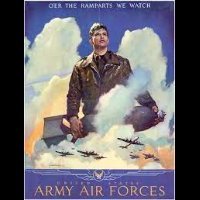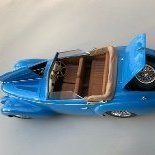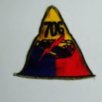Search the Community
Showing results for tags 'Vintage kit'.
-
Hi Salty Sea Dogs (and of course @TonyOD, here's another build for the list!) I threatened to put more ships in the SSDGB if I made good enough progress on the New Jersey, and so the next candidate is on deck! It's a really interesting subject - USS Boston, a Baltimore-class heavy cruiser. It started life as CA-69, a standard Baltimore-class cruiser. After the war, it wasn't modernised for the Korean War but instead taken aside and virtually rebuilt as CAG-1, the first guided missile cruiser in the US Navy. It was integrated with the Terrier SAM system, which, like most similar integrated missile system projects (eg. the Royal Navy's Seaslug on the County-class destroyers) was virtually obsolete within a few years of entering service. The kit is the venerable Revell box-scale which pans out at approx 1/485 by my measurements (1/483 according to Scalemates, who also put the kit at 1956 vintage!) It's a little rough and ready but the quality is pretty good for its age. Ironically, despite being box scale, I don't have a box for this kit - I found it stashed inside the giant box for the Revell New Jersey, so I must have stored it in there from years back. I'm enhancing the very basic kit parts with Model Monkey accessories in 1/490 scale...new bridge structure, twin 5"/38 gun turrets, new 8"/55 gunhouses with drilled trunnions, Mk37 directors for the secondary battery and Mk56 directors for the 3"/50 AA guns. Very pleased to have sourced this hen's teeth set from Gold Medal Models - 1/500 upgrade set for the vintage Revell cruiser models. The kit itself is pretty basic, as you'd expect of this vintage,. but the quality is pretty good. I expect it will build up into an interesting subject 🙂 Cheers again, Alan
-
Good morning, I have cleaned up my workshop by finishing some "Kutas", so I can join you and present my next build. I wanted to build this model as part of the Revell/monogram build group, but I ran out of time. I participated in a group build with the theme Midway on a French forum, and I bought this Monogram model. The model was taken over by Revell and cast in China. I will use a decoration from a Dauntless Hasegawa box. I had already built this model well over forty years ago, I have kept the illustration of the box and the instructions: I will build it with its features like wheels that retract, dive brakes that deploy, bomb that is dropped. See you soon. Regards, Eric-Snafu35
-
Good morning, In agreement with Denis/Corsairfoxfouruncle, I present you a construction that I started in 1981 (!!! ), and that I resumed a little before the beginning of this group build. Revell had made several boxes in a series called Famous Air Battle Scene: Photo source: facebook I remember seeing a FW190 crashed and flown over by a Thunderbolt at a friend's house, and I was thrilled with the diorama. And I found the Midway's one, produced in 1976. Allan31 showed us the Battle of Britain diorama in his work in the previous Revell/Monogram build thread. (That is why I wanted to show you this subject ). I had built the zero, which I found hanging from the ceiling of my teenage bedroom when we sold the house this year: Funny, isn'it? 😋 This construction represents barely 25% of the total, there is still a lot to do: I started by building the diorama: I found my childlike soul again, and jumped forty years back in time by doing some cutting! I have consolidated the walls of the dio which present the external decoration with thick cardboard, So I finished the base: To be continued... Regards, Eric-Snafu35
-
Good afternoon gentlemen Waiting a complete reorganization of my workshop, in order to continue my LadyBug build, and because containment don't allow me to do other interesting things, I've decided to begin this new projet. I'm probably a masochist to go on with such poor quality and difficult to assemble Heller kits, but this car is one of the most emblematic of the perfection that reached French manufacturers and coach builders between 1920 and 1960... Design perfection , mechanical perfection, luxury perfection ! I built my first copy of this model car about 45 years ago. At this time, we didn't have Internet, and I had no special documentation, and only very simple tools....and honestly, I didn't search perfection, only fun moments ! Pity, this copy, as the numerous Heller and Monogram car kits I built in this era, has been lost over my successive movings. Hereunder, some pictures of the box art, and of assembly instructions. My goal with this build: - Overcome the difficulties of the build, due to a very bad adjustment of the numerous body parts - if possible, make articulated bonnets and trunk lid as on the Talbot Lago Record, in order to show, or not, the engine bay and the trunk interior - Improve the cabin and engine bay detailing - Replace the windows with better ones Which colors for the body and upholstery ?...these ones ! ` And for the engine bay: A bit ambitious, isn't it ? Stay tuned if you like and thanks for watching
- 385 replies
-
- 11
-

-
- Vintage kit
- vintage car
-
(and 1 more)
Tagged with:
-
There are planes that become classics, and there are kits that become classics as well. In this case the classic kit is of a the classic plane, the venerable Ford trimotor, an American product that drew so much from Fokker and Junkers ideas, design, and construction techniques that some even considered it blatant plagiarism. In any case, the trimotor soon became an ubiquitous sight in the American and foreign skies, and was popular with airliners and passengers alike. Many were produced, and they operated wide and long, as the existing flying examples can attest. As we all know there are two kits of it, Monogram's 1/77th scale of the 4AT, and Airfix's 1/72 scale of the 5AT. The old Arfix kit depicts just one of the many diverse sub-types, and it is a good idea to check your chosen subject against actual photos of it, as you will be surprised to find that many details in the kit might not apply to your choice (or any choice), and the kit itself is peppered with inaccuracies that you may or may not like to live with. Some are easy to correct and/or not so relevant, while others are very difficult to correct and quite noticeable. Three of the latter are the really overly thick trailing edges, the absence of corrugations on the inner two thirds of the leading edges, and the "reversed" propeller blades. The mail holds in the wing are only suitable for some versions, as some did not have them at all, and others had a single-bay hold, not a double bay as in the kit. The frames for them in the kit is inaccurate, as the big hold was divided in two to clear a spar in reality. So you either fix that -photos in hand-, or just close them shut. If you want to know more, you may visit the building thread: If you are lenient or do not overly fuss about accuracy, you may consider that the kit still holds its own, but more demanding modelers may be eager for a more modern and accurate kit. I think they may as well pull up a chair, as this is not very likely to happen. I believe it still renders a fair replica when in good hands, it's affordable and abundant, and there are aftermarket masks and decals available for it. Why this kit became a classic, with the completely horrid fit issues and inaccuracies it has, it's yet another of the modeling universe mysteries. The Arfix kit can be built by a reasonably experienced modeler, with lots of work to fix issues: the locating points for the engine gondolas that guarantee bad fit, as well as the cabin and fuselage floor, that do the same, and the fit of the cabin inside the fuselage. All these issues combined explain the recurrent news of modelers going crazy and pretending, for example, that they are Martians. The cure is not easy, and the problem is compounded by confusing and poor instructions for the sub-assemblies involved. The model is as problematic as Henry Ford, an execrable and confessed racist -pals with another racist, Charles Lindbergh, a perfect example of historical whitewashing, even up to these days. The model: In this case, the chosen subject is the SACO (Servicio Aéreo Colombiano -Colombian Air Service) airplane F-31, in which Carlos Gardel, the Argentinean world-renowned tango singer tragically lost his life -together with his entourage and part of the crew- in a catastrophic accident during take-off while on tour in Colombia. There are so many attractive trimotor schemes, older and newer, that actually makes it difficult to chose one of them to replicate. There are even British-registered trimotors! I have already folders for potential candidates, in case I wanted to go through the ordeal again (which I very much doubt). For those interested in lists, here is what has been modified on this model: - Addition of a full restroom - Fabrication and addition of the missing sections of the corrugated leading edge -an omission that lets the kit down, a kit that otherwise may deserve better marks - Replacement of landing lights and addition of navigation lights - Modification of the propellers to correct reversed parts on kit - Substitution of the center (exposed in this case) engine for an aftermarket item - Detailing of engine gondolas with shrouds, louvers and other bits - Replacement of most of the original center engine exhaust - Addition of antenna masts and cables - Addition of cabin door step - Addition of passing red light on the leading edge - Thinning of wing trailing edges - Removal of molded-in control arms and substitution for new parts - Addition of all control cables on fuselage, tail and wing - Addition of control cable guides along fuselage - Replacement of tailwheel and all associated parts, adding missing details like bungee cords - Re-location of the misguiding holes for the engine struts - Replacement of aileron control horns - Addition of tail rigging - Fabrication of realistic wing mail hold and associated details - Correction of kit's mail holds to fit the version - Opening of all cabin and cockpit doors - Addition of restroom discharge on fuselage bottom - Deletion of details not pertinent to this specific version - New decal sheet made by Arctic decals specific for the plane modeled - Addition of instruments on the engine struts My thanks to Ricardo Fiorio, a friend for many decades, who provided key information to replicate Gardel's plane. My gratitude to Arctic decals, who kindly (and surely patiently) allows me to commission sets so I can continue to present these off-the-beaten-path types. If you want a trimotor, this kit may deserve the effort and time you invest on it to cure its many issues in order to obtain a replica of this iconic corrugated metal classic. It's up to you.
-
Hello everyone... I picked this up a month ago at the one local swap meet. With my intentions of using it in the future Revellogram classic kit build. However Ive decided to build it here instead. It will be mostly a stock oob build with some minor mods to convert it into an F-6B/C. Most likely it will be “Satans son”. As I have a decal set for this plane, my alternative will be “Big Momma”. Or an F-6C mustang from the 23rd FG out of china. Both planes I will need to scratch up the markings for. Here are the obligatory Sprue photo’s. Questions, comments, and or thoughts ? Dennis
- 78 replies
-
- 11
-

-
- Vintage kit
- 1/48 Monogram P-51B
-
(and 1 more)
Tagged with:
-
Another vehicle to be utilized as a prop for scale aircraft photography, fortunately in the same scale of the planes, 1/72nd. A remarkable number of vehicles were released long ago by Keil Kraft, and slowly but steadily I have been buying an assortment, of which I already built a couple. These are relatively simple molds with some reasonable detail. Their fit is fair and the breakdown is not cumbersome. Modelers may add detail to their satisfaction, (I did something of that on the double-decker posted here at some point, but with this one I limited my intervention to provide a few parts that were better replaced. There are some simplifications and generalizations as many times is the case with complex machines rendered as models, but this old kit is tempting enough (and most fortunately affordable enough) and it's fun the build. These machines were being produced at the dawn of the 20th century, and although still a lot are around (not in real working capacity, though), discretion should be used regarding which planes this model can be photographed with. Photos are aplenty on the Net, old and new, and the small detail variations of the model are seemingly infinity, so chose your photos and build and paint accordingly. The WiP is here:






